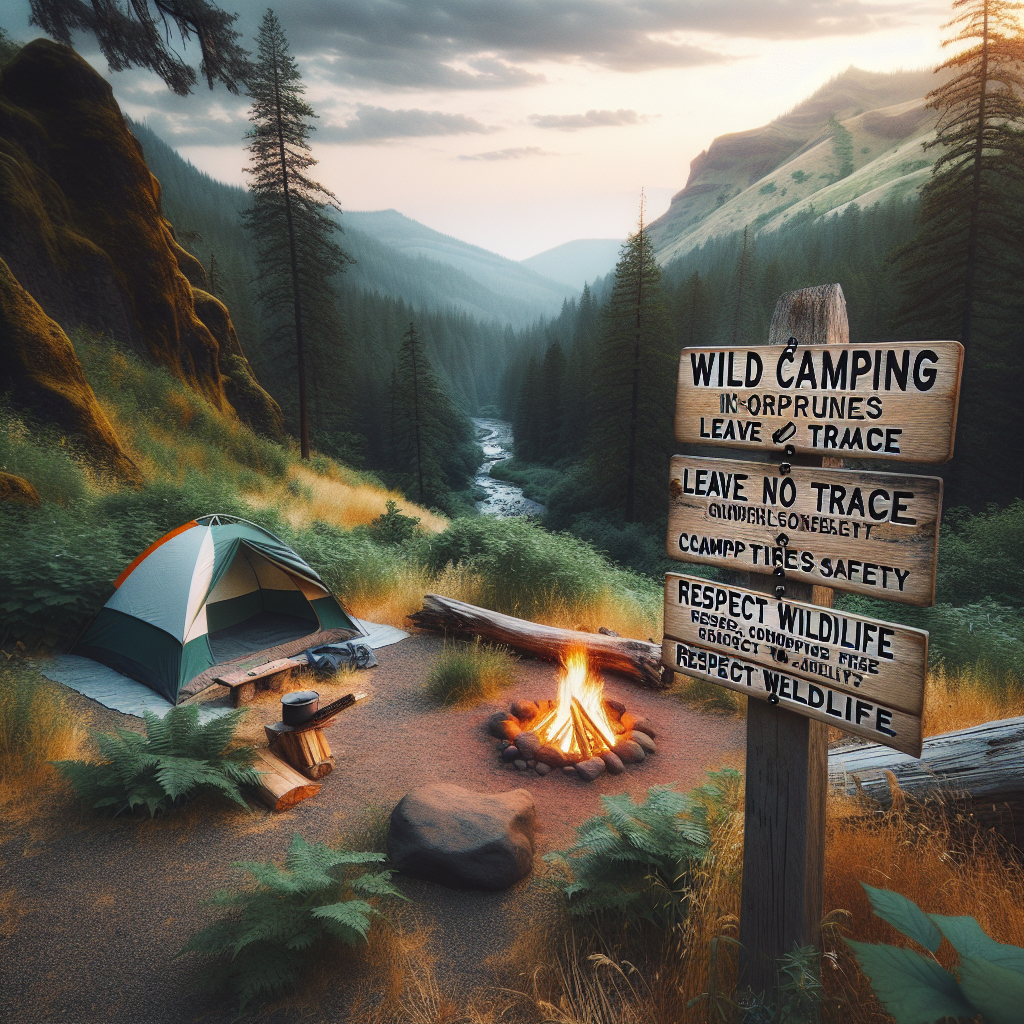Wild Camping Rules and Best Practices in Oregon: A Local’s Guide
Catching the Camping Bug in the Beaver State
There’s nothing quite like waking up to the dew-kissed mornings of the Cascades, or watching the sun melt behind the rugged cliffs of the Oregon coast. The beauty of Oregon’s diverse landscape is something every outdoors enthusiast dreams of experiencing, particularly wild campers. However, just like packing a sturdy tent and a can of bear spray, understanding the rules and best practices of wild camping is a must.
Understanding the Rules: Leave No Trace
It’s important to keep the “Leave No Trace” principle in mind so everyone can enjoy Oregon’s natural wonders just like we do. Essentially, this means packing out what’s packed in, respecting wildlife (Yes, that means not feeding that adorable squirrel!), and leaving plants, rocks, and other natural features as they are found.
When establishing a wild camping site, it’s best to follow the “200-foot” rule. Choose a spot that’s at least 200 feet away from lakes, streams, and trails. This way, campers minimize their impact on the environment and respect all who share Oregon’s outdoor spaces, from fellow adventurers to the state’s wildlife.
Seasonal Considerations: Planning Ahead is a Must

Planning any camping trip requires taking into account the time of year. For instance, while Mount Hood National Forest is a heavenly spot for camping just about any time, during the summer months bugs can be particularly pesky. Remember to pack bug spray or long sleeves; it’ll save regret down the line.
On the flip side, coastal destinations like Nehalem Bay State Park can be uncomfortably windy from November to March. Always bring a wind-resistant tent and plenty of warm and waterproof clothing.
Campfire Etiquette: Great Fun, Greater Responsibility
Campfires are at the core of camping tradition, but they also pose a significant fire risk, particularly during Oregon’s dry summer months. Always check local fire restrictions before lighting a match. Areas like Crater Lake National Park might have different fire regulations depending on the season or current wildfire risk.
If allowed, campfires should be carefully managed: never left unattended, kept small, and completely extinguished (enough so they could be touched) before turning in for the night. Some folks swear that a true Oregonian can extinguish a campfire using only a water bottle!
Tips for Going Off-Grid: Safety and Preservation
Going off the beaten path often leads to the most memorable experiences. Those who dare to venture might find hidden waterfalls near trails in Silver Falls State Park or picturesque views on the less-trafficked sections of the Pacific Crest Trail. But remember, safety comes first.
If planning a solitary journey into the wilderness, always make sure someone else knows the route and expected return date. Cell service can be spotty, especially in areas like Deschutes National Forest, so don’t rely on phones for navigation or communication.
Remember to bring enough food and water, as well as a way to purify water from natural sources. Using a lightweight, compact water filter can keep the water sources cleaner than purifying tablets would.
A Note on Waste
Dealing with waste is a critical aspect of wild camping that’s often overlooked until necessity strikes. In many backcountry areas, like the Eagle Cap Wilderness, there are no restroom facilities. It means it’s on the campers to properly take care of their waste.
Solid human waste should be buried at least 6 inches deep and at least 200 feet away from water sources, campsites, and trails. Make sure to carry a trowel or digger for this purpose. And yes, used toilet paper should be packed out – consider biodegradable bags for this task.
Finishing Touches: The Local’s Send-off
Well, that’s about it, the basics of wild camping in Oregon from a lifelong Beaver-State local. No rules and regulations can replace common sense, respect for the environment, and kindness for fellow outdoorsfolk though. The goal is to preserve Oregon’s wilderness for future generations to enjoy—just like we do.
So go ahead, get outside and explore those snow-dusted Mount Jefferson peaks, mossy riverbanks of the Willamette Valley, and awe-inspiring views down the Historic Columbia River Highway. Just remember to treat every inch of Oregon with care, and it will reward with breathtaking moments and stories to tell around the campfire. Welcome to our wild and wonderful playground!
